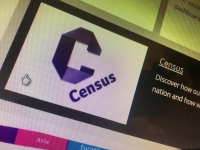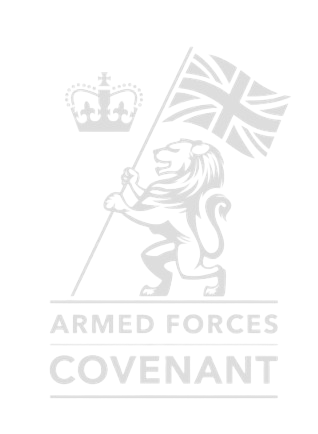
In the latest edition of our Unlocking Success series, we look at how organisations can create longer lasting value from using contract staff.
In the contracts with one of our long-standing clients we have a written clause covering contractor transition and knowledge transfer. Indeed, to win the assignments in the first place, we need to present a comprehensive plan to ensure that the intellectual property developed by the contractor is effectively retained by the organisation. We thought this might be a useful subject to touch on in this series given how little attention it is often given – especially in times of 0 days notice.
As we know, change is an inevitable facet of organisational life, particularly when it involves personnel. While using contract staff can deliver huge benefits, the person leaving can pose huge challenges, particularly where knowledge transfer is concerned. Rather than being concerned here, adept preparation can transform this into an opportunity to reassess team dynamics and identify areas for improvement. A contractor transition plan serves as the foundation for managing such changes with minimal disruption to business operations.
Here we look at key aspects of creating an effective contractor transition plan.
What Is a Contractor Transition Plan?
A contractor transition plan is a dynamic document that outlines the crucial projects, responsibilities, and other details associated with a contractor's role. This plan establishes a structured approach or standard operating procedure (SOP) for:
- Handing over responsibilities
- Managing pending and future tasks
- Ensuring smooth operational continuity
This plan extends beyond the daily details of a contractor’s tasks and responsibilities, encompassing a framework for knowledge sharing, risk mitigation, and expectation setting. Typically utilised when an individual is leaving a team or organisation, it proves valuable during project handovers, new contractor onboarding, or other organisational.
When Is a Contractor Transition Plan Needed?
Contractor transitions occur at various levels and for diverse reasons within an organisation. Relevant scenarios include:
Increased Responsibilities: When a contractor secures an enlarged role within the company, a transition plan aids in succession planning.
Resignations: In cases of contractor resignation, a transition plan preserves the valuable knowledge of the departing contractor.
Shift in Job Roles: Organisational restructuring may lead to changes in job titles, descriptions, and duties. A transition plan helps redefine responsibilities during strategic shifts.
Long-Term Absences: Whether due to parental leave or extended medical leave or even furloughs, a transition plan ensures the continuity of duties during a contractor’s absence.
Why Is A Contractor Transition Plan Important?
A well-designed contractor transition plan offers numerous benefits to a company:
- Ensures business continuity, preventing disruptions to crucial projects.
- Facilitates smooth knowledge transfer to new and existing team members.
- Reduces uncertainty and anxiety for both remaining team members and the transitioning contractor.
- Enhances contractor engagement and morale by involving the departing contractor in the transition process.
- Prevents business losses, missed opportunities, and other risks during transitional phases.
- Saves time and resources by providing a citable plan during busy periods of change.
While consistent communication remains crucial, a contractor transition plan serves as a written resource for repeated reference.
Key Elements of a Transition Plan
A contractor transition plan functions as an SOP, offering comprehensive details of a contractor’s duties. It includes:
List of Responsibilities:
A detailed inventory of daily, project-related, and overarching responsibilities provides a holistic view of the contractor's role.
Timeline:
A clear timeline helps keep the transition on track, especially when time is limited.
Log of Current Projects and Deadlines:
An overview of ongoing projects, impending deadlines, and guidance for completion ensures a smooth handover.
Key Contacts:
information on contacts, including names, job titles, companies, reasons for contact, email addresses, and phone numbers, facilitates seamless communication with stakeholders.
What Is a Transition Plan Template?
A transition plan template is a reusable guide or checklist outlining the components necessary for creating a contractor transition plan. It serves as a starting point, ensuring consistency in planning for departures or leaves of absence. The template includes:
- Duties and responsibilities (daily, weekly, monthly, etc.)
- Priorities and transition timeline
- Current projects and upcoming deadlines
- Key stakeholders' contact information
Templates can be simple documents or more elaborate tools like SharePoint sites or project management platforms.
How to Create a Transition Plan with Your Contractor
Even with a template, crafting a personalised transition plan involves several steps:
Start the Conversation:
Initiate a candid conversation with the contractor, gathering insights about their role, responsibilities, and ongoing projects.
Assess Role and Responsibilities:
Review records of the contractor's position, job description, and any changes in responsibilities. Align these records with the contractor's assessment.
Establish Objectives:
Clearly define the goals to be achieved by the end of the transition period.
Choose a Successor:
Collaborate with the contractor to select a successor, considering the nature of the transition.
Draft the Transition Document:
Create a comprehensive transition document outlining key details of the transition process.
Review by the Contractor:
Allow the contractor to review and provide feedback on the transition plan, ensuring accuracy and completeness.
Onboard and Off-board:
Facilitate the onboarding of the new contractor and the off-boarding of the departing contractor, ensuring a smooth transition.
Finally
If you are looking for your next role or to employ new talent into your organisation, we can help.
For more information on how we can help you become or recruit the high-performing individuals you need, get in touch with us on 0870 042 1430 or email us here.
Read our latest “Transformation Trailblazers” Newsletter in which we are talking change, transformation and technology - from the innovators and triumphant to the stagnant and struggling — Read it here.
Marta Ortigas is a Director at Malikshaw Interim & Executive, a leading interim management and executive search firm exclusively focused on helping organisations achieve transformational change through delivering high performance, diverse, impactful talent teams.
Transforming our client’s performance through exceptional talent…
+44 7715 905810
marta.ortigas@malikshaw.com
www.malikshaw.com









